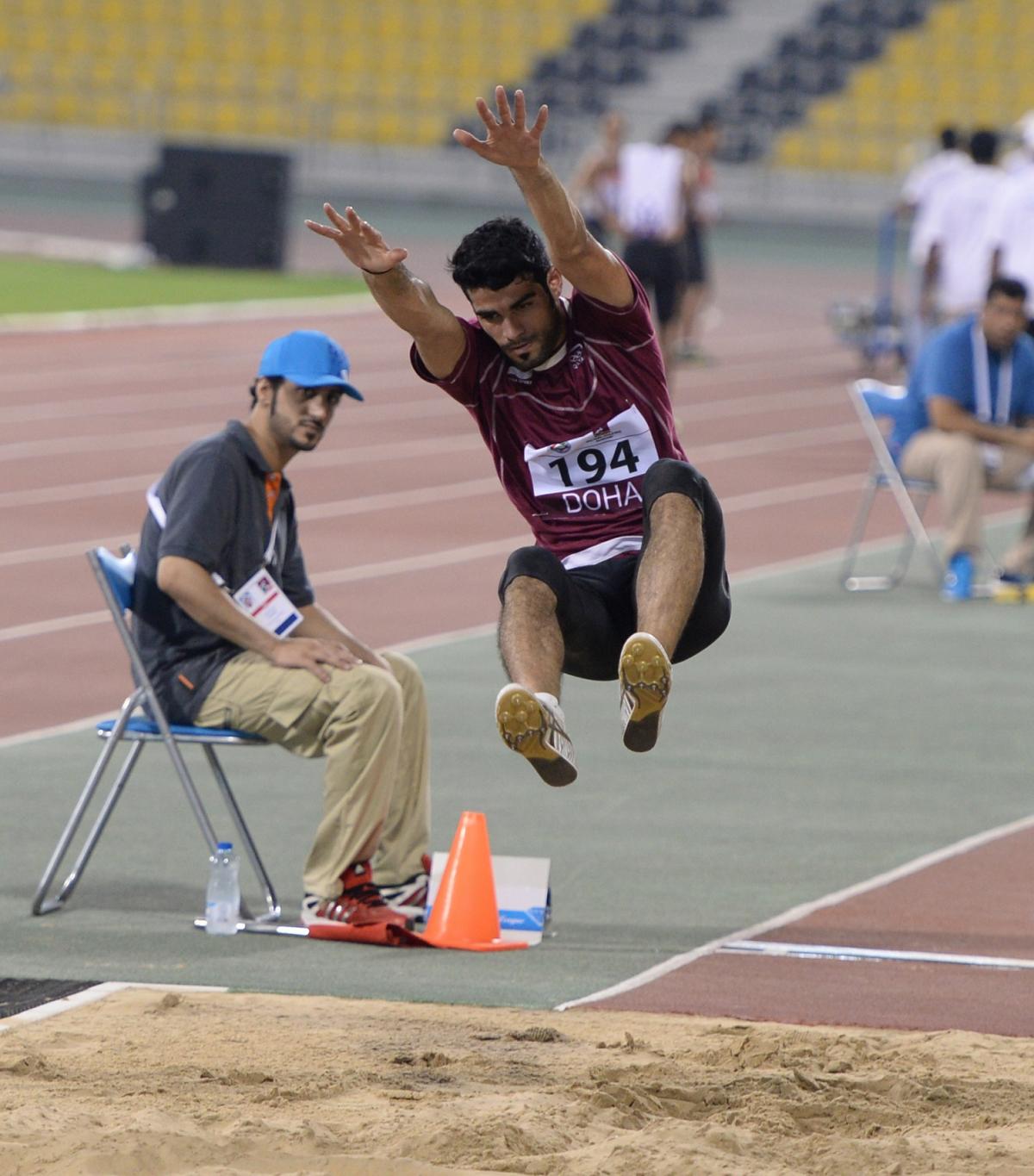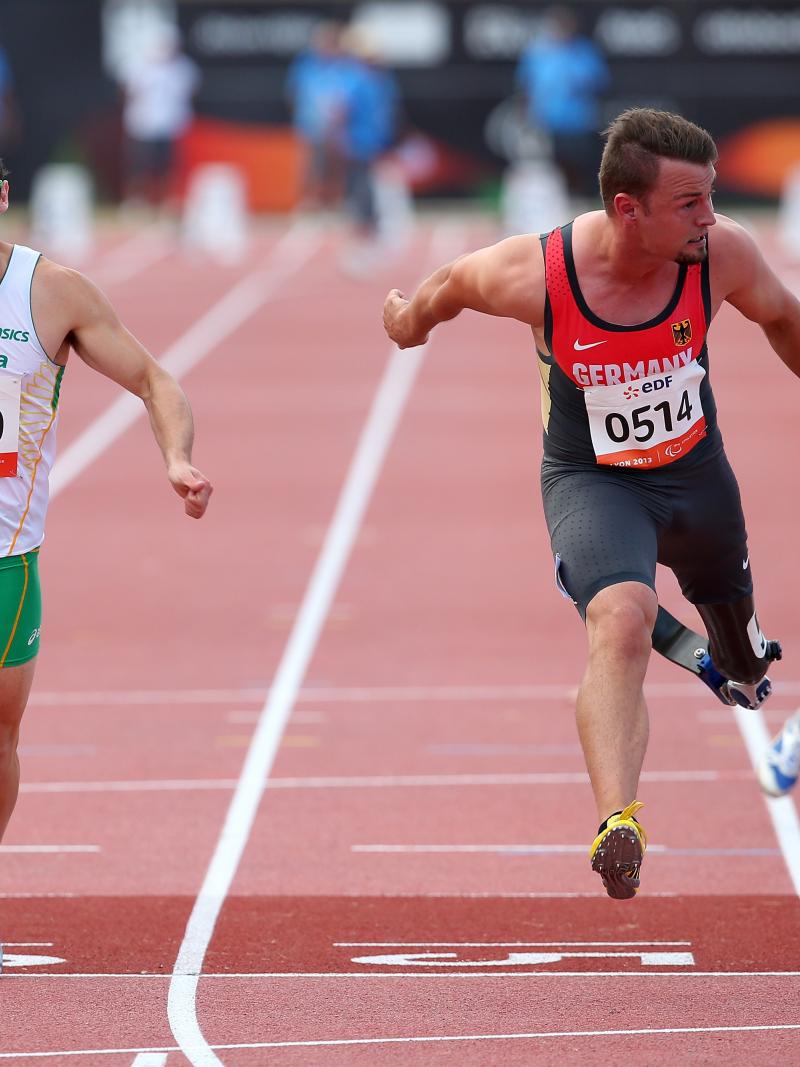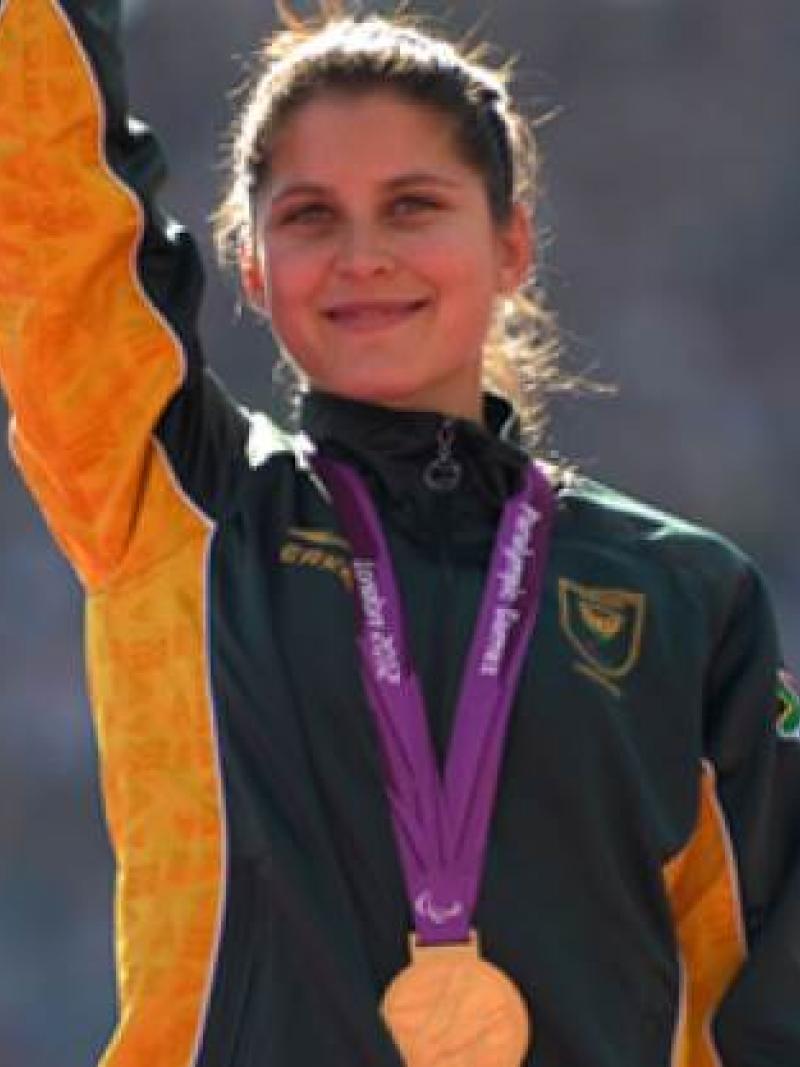Doha 2015 Newsletter - Understanding para-athletics: T/F 20
T/F 20 – Intellectual impairment (Arabic version below) 15 Oct 2015
Athletes with an intellectual impairment compete in the T/F20 sport class in three disciplines, namely: long jump, shot put and the 1,500m. In order to compete in this sport class, athletes must meet strict minimum impairment criteria (eligibility criteria).
For athletes to compete in the T/F20 sport class, they must meet the minimum impairment criteria, having: an IQ of 75 or below, onset before the age of 18, and significant limitations to adaptive behavior such as communication, self-care, and social skills. If an athlete meets the minimum impairment criteria they will undergo athlete evaluation by a classification panel, in which the impact of intellectual impairment on the sport is assessed both on and off the field of play.
Notable athletes that compete in the T/F20 sport class include current long jump world record holder, Jose Antonio Pineiro of Spain. Pineiro, 37, has held on to the long jump world record with an incredible distance of 7.48 m for 10 years. The Spanish para-athlete is also a three-times Paralympic Champion from the 2000 Sydney Paralympic Games where he won gold in the long jump F20 and 100m T20 (no longer a Paralympic event) and the 2012 London Paralympics where he retained his long jump F20 Paralympic title.
Team Qatar has two para-athletes competing in the T/F20 sport class – Abdulla Abdulraheem, 24, who competes in the men’s long jump event and Mohamed al-Abd, 27, who competes in the shotput event.
Classification aims to minimise the impact of impairments on the outcome of competition, with a prefix of “T” used to denote track/jump events while the “F” prefix is used to indicate field events.
In the T/F30s sport classes, the lower the number is, the more significant the activity limitation. Athletes in the sport classes T/F31-34 compete in a seated position, e.g. in wheelchair racing or using a throwing chair. In contrast, athletes in the sport classes T/F35-38 show a better function in their legs and better trunk control and therefore compete standing, e.g. in running events, long jump or throwing events.
____
فهم طبيعة ألعاب القوى لذوي الإعاقة
تصنيف T20 - الإعاقة الفكرية
يتنافس الرياضيون ذوي الإعاقة الفكرية ضمن تصنيف T20 في ثلاثة تخصصات، هي الوثب الطويل، ورمي الكرة الحديدية، والعدو لمسافة 1500 متر. ومن أجل التنافس تحت هذا التصنيف، يجب أن يستوفي الرياضيين معايير الأهلية الصارمة.
على النقيض من غيرها من الإعاقات التي يمكن اكتشافها بسهولة أكبر، يصعب تصنيف الإعاقة الفكرية بسبب طبيعتها. وحتى يتسنى للرياضيين المشاركة ضمن تصنيف T20، يجب عليهم استيفاء المعايير الأهلية الرئيسية التي تشمل إحراز معدل ذكاء يبلغ 75 درجة أو أقل، قبل بلوغ سن 18 عاماً، هذا بالإضافة إلى استيفاء القيود الكبرى على السلوك التكيفي مثل الاتصالات، والرعاية الذاتية، والمهارات الاجتماعية.
وتشمل قائمة أبرز الرياضيين الذين سيتنافسون ضمن تصنيف T20 حامل الرقم القياسي العالمي الحالي، خوسيه أنطونيو بينيرو الإسباني. وقد أحرز بينيرو الذي يبلغ 37 عاماً الرقم القياسي العالمي في الوثب الطويل بالقفز لمسافة 7.48 متراً لمدة 10 أعوام. كما أحرز هذا البطل الأسباني من ذوي الإعاقة لقب البطل البارالمبي ثلاث مرات من أولمبياد سيدني للمعاقين 2000 ،حيث فاز بالميدالية الذهبية في الوثب الطويل من فئة F20 والعدو لمسافة 100 متر من فئة T20، وكذلك في أولمبياد لندن 2012 ،حيث احتفظ بقلب البطل البارالمبي في الوثب الطويل من فئة F20.
وتهدف تصنيفات اللجنة البارالمبية الدولية للحد من تأثير الإعاقات في التخصصات الرياضية، حيث تستخدم البادئة "T" للدلالة على فعاليات المضمار/القفز في حين تستخدم البادئة "F" للإشارة إلى الأحداث الميدانية. أما في الفصول الرياضية الثلاثين، كلما انخفض الرقم، زادت قيود النشاط. ويتنافس الرياضيون في الفصول الرياضة 31-34 في وضع الجلوس، على سبيل المثال في سباق الكراسي المتحركة، أو باستخدام كرسي رمي. وفي المقابل، يظهر الرياضيون في الفصول الرياضة 35-38 أداءً جسدياً أفضل باستخدام أرجلهم وقدرة أفضل على التحكم في جسدهم، ما يمكنهم من التنافس في وضع الوقوف، ومن ذلك على سبيل المثال المشاركة في فعاليات العدو أو القفز الطويل أو الرمي.

 Facebook
Facebook
 Instagram
Instagram
 Twitter
Twitter
 Youtube
Youtube



